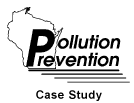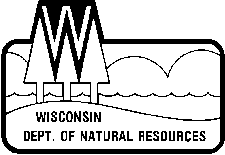
Alternative
coating to reduce volatile organic compound
(VOC) emissions from lacquer coating operations
Scrap wood and office wastes. Waste coatings which test as non-hazardous are sent for fuel-blending.
Hazardous Wastes
Spent solvents.
Air Emissions
Volatile organic compounds (VOCs) from coating operations and associated cleanup.
Dry application of a formulated wax coating for selected parts in lieu of a lacquer coating.
Many of Gerry's product components, such as wooden slots and rods, are finished by means of a tumbling process. Previously, the finishing process consisted of loading component parts into a barrel, pouring lacquer-type finishing material in the barrel and rotating it until coverage of the components was smooth and uniform.
This process had been cost-effective and efficient. However, the lacquer-type finish that had been used in the tumbler was a significant source of VOC emissions in the facility.
Feedstock
Liquid lacquer.
Waste
VOC emissions from the curing of tumbled lacquer coated products and other hazardous
wastes from daily cleanup.
Disposal
Air emissions.
Pollution Prevention Approach
Feedstock
Dry formulated wax.
Waste
VOC emissions have been reduced by 44,800 pounds per year. Also, hazardous wastes from
daily cleanup have been reduced by 5,000 pounds per year.
Disposal
Air emissions. The working environment no longer requires a special air supply or
exhaust to remove the VOCs.
No new capital costs.
Operating/Maintenance Costs
Daily cleanup, labor and waste costs have all been reduced.
Payback Period
Immediate. Annual savings of over $200,000 have been realized.
214 Nu-Line Street
Suring, WI 54174
Environmental Finishing Technician
Phone: 414/842-2141
University of Wisconsin Extension
Solid and Hazardous Waste Education Center
Milwaukee area: 414/475-2845
Remainder of state: 608/262-0385
Pollution Prevention
Information Clearinghouse
Wisconsin Department of Natural Resources
Hazardous Waste Minimization Program
608/264-8852, 608/267-9523 or 608/267-3763
 |
PUBL-SW-239 |